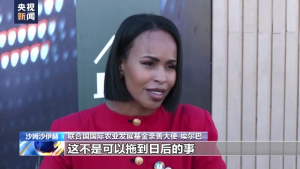On the 2nd of this month, the Fed raised interest rates by 75 basis points again to fight inflation. This is not only the sixth interest rate increase this year, but also the fourth increase of 75 basis points since June. It has risen to 3.75%~4.00% in the US, which is the highest federal funds rate since January 2008. Up to now, the US has increased interest rate by 375 basis points this year, setting the fastest rate increase record of the Fed in more than 40 years.
The Fed undertakes two tasks of stabilizing prices and providing enough jobs. At present, the Fed still focuses on stabilizing prices, takes fighting inflation as the top priority and is committed to reducing inflation to 2%. According to the data released by the Bureau of Labor Statistics, the US CPI in October rose 7.7% year on year, lower than the 7.9% expected by the market. The increased interest rate played a role, but the inflation is still at a high level in decades. Can we completely solve the inflation problem in a short time is still unpredictable. Jerome Powell, the chairman of the Federal Reserve, said earlier that high inflation influenced the US economy, and the Fed may decide to slow down the rate hikes in the coming months. However, he also made it clear that the Fed is still far from “announcing the effectiveness of curbing inflation”. At present, the inflation in the US is close to a 40-year high and shows no sign of decline. It’s a long and difficult road for the US to fight inflation. On the whole, we should not underestimate the duration of high inflation in the US, nor be excessively optimistic about the American economy. The Fed is in the “impossible trinity”, which means the Fed has to fight the inflation, stabilize growth and prevent recession at the same time.

The Fed hikes interest rates constantly, which has made American mortgage loans, other consumer and commercial loans more and more expensive, and increased the risk of economic recession. At the same time, the increase of lending rate will benefit the bond market, and the capital flowing into the stock market will decrease, which will impact the US stock market and inhibit investment. Up to now, the Fed has not made any progress in fighting inflation, but the side effects of interest rate hikes have gradually emerged. “Recession” has become the biggest key word for Wall Street to portray the US economy next year. Large banks such as Goldman Sachs, Nomura and UBS have issued warnings. In a report of the UBS released on Monday, it warned again that the US could not avoid a economic hard landing next year. UBS predicted that the real GDP of the US would shrink by about 1% next year, while the unemployment rate would reach 5.5% in 2024. Paul Krugman, Nobel laureate in economics, said that the main reason for the growth of the US economy in the third quarter was the narrowing of the trade deficit. He believed that radical interest rate hikes would impact US exports and the real estate market, leading to the decline of the US economy eventually. As the appreciation of the US dollar reduces the competitiveness of US exports, and the slowdown of overseas economic growth may weaken the demand for US goods, the impetus for US economic growth will disappear. High interest rates will also increase the cost of mortgage loans, eroding Americans’ financial space and ability to buy houses.
In retrospect, the cause of this global inflation can be traced back to the international financial crisis in 2008. At that time, the Fed launched the unprecedented quantitative easing. After the outbreak of the COVID-19 in 2020, it implemented the “unlimited” quantitative easing, and the “loose” monetary policy, which directly led to today’s inflation in the US. Over the years, the US financial and monetary decision-making authority has become increasingly obsessed with pursuing short-term goals and catering to the short-term interests of election politics. In keeping with the White House political agenda, the Fed has repeatedly underestimated the severity of the inflation and missed the best opportunity to control it. If the Fed continue to hike interest rates continuously, it may lead to a “economic hard landing” in the US, and the economy will deeply sink into the mire of recession. In addition, with soaring prices, the US will once again fall into “stagflation”, which will affect the long-term trend in the next 20 to 30 years. The US really needs to make prudent decisions when implementing economic policies.

